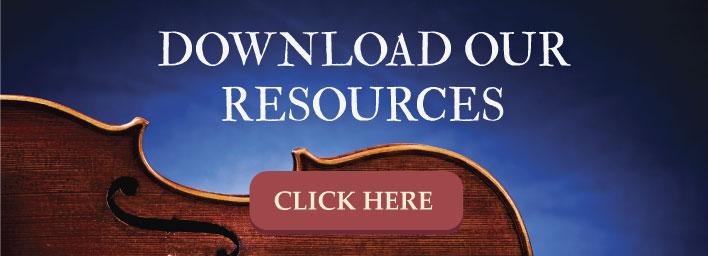What is the Role of an Artistic Director with the Orchestra?

For many community or symphony orchestras, the conductor (or music director) and the artistic director are the same person, and s/he performs both roles. However, there are theaters, orchestras, opera houses, and dance companies that opt to have a separate person serving in the role of artistic director. In that case, the music and artistic directors work together, collaborating on how the seasonal stage, theater, and performances will look – as well as sound.
As a result, many string musicians find themselves under the supervision of an artistic director of a theater or dance company they play for, and will have to adhere to his/her vision for a particular performance or event. Or, as a string musician encountering artistic directors within your larger community and performance worlds, you may decide that artistic direction is a career you’re interested in learning more about.
What Does an Artistic Director Do?
Conductors typically select their own repertoire for the season. If they work in a theater or opera house, however, it’s the artistic director (AD) who is most likely to make the ultimate calls on things like:
- Choosing performance/musical themes to explore
- Commissioning composers, choreographers, and writers for productions
- Composing, choreographing, or writing their own works to be performed
- Hiring directors, producers, set designers, crew, etc., required for each job
- Producing, directing or choreographing on their own
- Marketing
- Fundraising
- Weighing in on important decisions that affect the organization they work for
As you can see, artistic directors must have a diverse array of skillsets to do their job well. They are typically ultra-creative visionaries, with lots of energy – and they have developed plenty of industry connections over the years. These connections will continue to benefit their organization for the duration of the AD’s career.
Supporting Management & Administration
In some cases, artistic directors exclusively work on the artistry of the events, as their title implies. However, many of the theaters, playhouses, opera houses, and other arts organizations that employ artistic directors are non-profits.
As a result, many ADs are heavily involved in the management and administration side of things. They may play a role in ticket pricing, creating reduced ticket prices for specific sectors of the population (students, seniors, military, etc.), and continuing to re-envision – or promote – the organization’s brand to relevant and up-and-coming target audiences.
Future Conductors Are Wise to Expand Their Education & Experience
If you’re an aspiring conductor, it would be wise to develop all aspects of your creative side(s) and to take some business, marketing, and bookkeeping classes. Participating in local theaters and playhouse venues is also a wise idea.
We say this because a look at current job listings for artistic directors shows how Jack/Jill-of-all-trades organizations want their artistic directors to be – especially since so many of them wind up wearing both the music and AD hats as the result of budget cuts or during the slower seasons between peak performance times.
Some of the things organizations and their board of directors look for when hiring an artistic director include:
- A master’s degree in fine arts or performing arts (or the equivalent)
- Being a current or former conductor (director, producer, etc.)
- A work history including years of experience working in a theater, playhouse, opera house, or for a related organization or performing arts group.
- Proof of a willingness to do what it takes to get a job done
This isn’t a job that people apply for right out of college. Rather, achieving a position as an artistic director is a culmination of a career in the world of music and/or the performing arts. Often, it’s a position that you work your way up to by continuing promotions within the same organization.
In addition to answering to the board of directors, artistic directors often serve as the public face and spokesperson for the organization and must be charismatic. To be successful, they have to to work with a variety of people and personality types and continue advancing their organization’s public brand (and profitability) over time. On the flip side, there are occasions where artistic or music directors are difficult to get along with, in which case you’ll learn to hone your diplomacy skills.
If you find yourself playing in a band or orchestra, and working underneath an artistic director, find ways to get to know him/her. A reference/referral from a respected AD can boost employability as you continue to advance in your own musical career. Plus, the more you learn about the ADs you encounter, and what they do, the more you may find yourself drawn to a career goal you never knew you had – becoming an artistic director!


